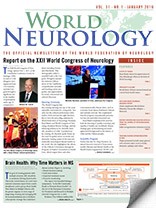By Peter J. Koehler
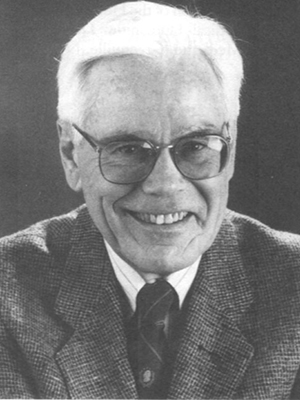
Thomas Neville Bonner (1923–2003)
“Medical students constitute the only class of students who in any considerable number follow the good old German custom of supplementing their regular course of study (Lehrjahre) by a season of travel (Wanderjahre) for the purpose of seeing how people in other places perform that work which is to occupy the remainder of their lives.” — Henry Hun, 1883
Since 2010, we have published a number of short papers on international relationships and exchange in the neurological community. It is of interest to note that the leading centers of medical education changed over the past centuries and thereby advanced international exchange. Italian (Padua) and French (Paris, Montpellier) universities were popular in the 16th and 17th centuries. Leiden (the Netherlands with Boerhaave and Albinus) became popular in the early 18th century, and later, during that century, the center moved to Edinburgh (with Whytt, Cullen and the Monros). Then, in the beginning of the 19th century, it was clearly Paris that, following the revolution, became a center of integrated medicine and surgery, attracting foreign students.
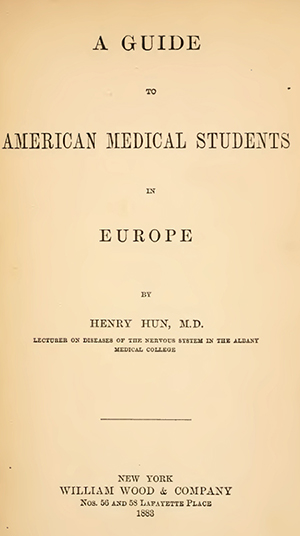
Henry Hun’s Guide to American Medical Students in Europe
Of particular interest in the second half of the 19th century is the great number of foreign (American, Russian, Japanese, Scandinavian, etc.) students and physicians, who visited German-speaking countries between 1870 and 1914. The American medical historian Thomas Neville Bonner (1923–2003) stated that in this period, over 10,000 American physicians studied in Vienna, where some of the courses were given in English. He called it “the German magnet” and noted that “at least a third and perhaps a half of the best known men (and women) in American medicine of this era received some part of their training in a German (or Austrian) university: (Bonner, p.23).
The well-known American internist William Henry Welch, one of the founding professors of Johns Hopkins Medical School, opined that it was “conventional Mecca of American practitioners” and advised to “stick to Germany, where I find all the opportunities for learning pathology which I could desire.” It is of no surprise that American medical education was influenced by returning physicians. Johns Hopkins University Medical School was organized according to the German model. In this period of increasing specialization in medicine, it was important for physicians to improve their knowledge in Europe.
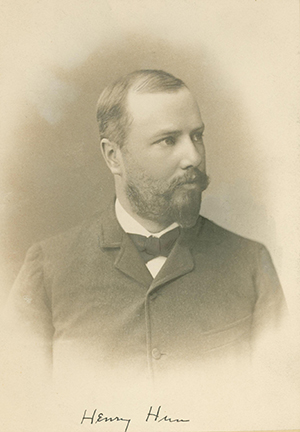
Henry Hun
As improvement of medical practice was considered more important than research, smaller numbers of (mostly younger) Americans visited other German universities, including Leipzig (Carl Ludwig), Heidelberg, Breslau and Strasburg, with the purpose to do scientific work. Although a minority, the latter persons were important for the origin of medical research in the U.S. The majority went for postgraduate training, in particular for improving skills in a clinical specialty. Some of the courses were organized to train the practical use of the ophthalmoscope, microscope, laryngoscope and stethoscope. In April 2011, I discussed the European peregrination of Bernard Sachs between 1878 and 1884.
Features of Specialization in Medicine/Neurology
- Education/Medical Curriculum
- Neurological Practice/Special Hospitals
- Instruments
- University Chairs
- Societies
- Journals/Monographs
- Success of Specialization Determined by:
- Economic Reward
- Social Prestige
- Ideology of Progress
- Influence of Public, etc.
A Guide for Medical Students in Europe
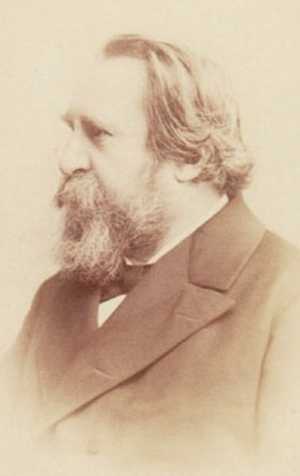
Theodore Meynert
In this issue, I wish to discuss a particular book that was published to help American students and physicians finding their way in Europe, notably Henry Hun’s Guide to American Medical Students in Europe (1883). Henry Hun (1854–1924) was a lecturer on diseases of the nervous system at the Albany Medical College. His father, Thomas Hun, one of the founders of this college, stayed in Europe for his postgraduate studies for six years (1830s), and although professor of the Institutes of Medicine, he gave lectures on the nervous system (in a period before specialization in neurology started). Henry’s older brother Edward (1842–1890) became chair of diseases of the nervous system in Albany and was among the original members of the American Neurological Association, Which was founded in 1875. Following graduation from Harvard Medical School, Henry Hun followed postgraduate courses in several European cities for over two years. He became professor of diseases of the nervous system at Albany in 1884. In the preface to his Guide, he noted that “Every year, a large number of Americans go to Europe to complete their medical studies. Unfortunately the great majority of these students have very little definite information about the different universities or about the way in which medicine is taught abroad, and on this account they lose much valuable time in getting to work.” The book has 151 pages, and, although we know he himself visited Vienna, Heidelberg, Berlin, Paris and London, most of the book is on German (speaking) universities and hospitals. As he did not visit all places described in the book himself, he received information from colleagues, acknowledging them in the preface: “For a large part of the information in the book, I am indebted to the kindness of many friends.” He admitted that some American centers provide good opportunities too.
Some students go to New York or the other large cities of America, but by far the greater number go to Europe, and especially to Germany. The reason for this is not difficult to understand. In our large cities, and especially in New York, there are certain clinics and opportunities of study that are probably unsurpassed in the world. But there is, undoubtedly, no place where a student can attend so many excellent clinics with so little loss of time, or where he can so well train his eyes and hands in methods of diagnosis and treatment, as in Vienna; while, if he is less anxious for clinical study, and wishes to train himself in laboratory work and methods, he can nowhere accomplish this so well as in Germany (Hun, p.1-2).
Expenses, language and cultural activities
The Guide offered all kind of information, including the expenses to be expected. “By exercising the very strictest economy, a medical student could study in Germany for a year (one semester being spent in Vienna, the other in a smaller town) for between $700 and $800.” As for Berlin: ‘The cost of living in the best pensions varies from 120 to 200 marks ($30 to $50) per month” (Hun, p.35). And of course, the language needed consideration. “Even though the student has a fair knowledge of the German language, and can read it without much difficulty, he will find it greatly to his advantage to live in a German family for a couple of months, and to work at the language before he commences to attend lectures.” However, he noted “the majority of the instructors can speak English more or less perfectly.” He even paid attention to the cultural activities, such as art and music. “If Munich or Dresden be selected as the cities in which to learn German, the spare hours of the day may be devoted to the picture galleries,” and “the Germans are a very music-loving people, and if the student is interested in music he can combine the study of that branch with the study of German.”
Neuroanatomy and Nervous Diseases
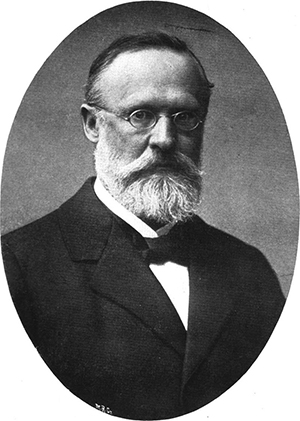
Wilhelm Erb
Most important of all, were his advises about specialization and for the aim of this essay, neuroanatomy and nervous diseases will be discussed. With respect to Vienna, he advised to go to the well-known neuroanatomist and psychiatrist Theodore Meynert.
Prof. Meynert lectures every day, except Saturday, from 12 to 1. On three days, he gives systematic lectures on the functions of the brain and their disorders. These lectures are very interesting, but very difficult to understand. Twice a week he exhibits patients. On Saturday, from 10 to 12, he demonstrates the anatomy of the brain. He also allows students to work in his laboratory on the finer anatomy of the nervous system. His work and lectures are very interesting, but he is very irregular in his attendance (p.19).
“But the study of nervous diseases is not satisfactory in Vienna,” although Moriz Benedikt gave good courses on electro-diagnosis and therapeutics. Hun considered Berlin and Heidelberg (Friedreich, Erb) the most important universities for nervous diseases. In Berlin the use of electricity in diagnosis and treatment was given by Martin Bernhardt (of the Bernhardt-Roth syndrome, a.k.a. meralgia paresthetica) and Ernst Julius Remak (son of Robert Remak). Hun expressed mixed feelings about the course of nervous disease by Carl Wernicke. They were “very good, but rather abstruse lectures on the general principles of nervous diseases, without much regard to any special diseases. He does not show many patients.” He also mentioned the lectures given by Carl Westphal, demonstrating that psychiatric and nervous diseases at most German universities were still taught as one discipline.
On the first two days, he shows insane patients. Pn the last day, he shows patients with nervous disease. He devotes the first part of each exercise to a systematic lecture, and, in the last part, he exhibits two or three patients. Prof. Westphal devotes himself rather to showing the disease in its clinical aspect than to discussing the nature of the process taking place in the brain, and in this respect the course is in decided contrast to that of Prof. Meynert in Vienna (Hun, p.44).
As for physiology, he, of course, referred to the famous physiologist Emile du Bois-Reymond, who “gives experimental lectures on physiology, and he allows students to work in his physiological laboratory. He has a very handsome and well-arranged lecture-room and laboratory.” Hun also referred to Hermann Munk.
In Heidelberg Nikolaus Friedreich (of the well-known hereditary ataxia) and Wilhelm Erb were Hun’s favorites. “Prof. Friedreich used to hold an excellent medical clinic. He visited the wards daily with the students. He assigned cases to the students and criticized their examinations. He also gave systematic lectures on the theory and practice of medicine. His successor, Prof. Erb, will probably conduct the clinic in the same way, and will doubtless devote much time to the discussion of nervous diseases’.
French and English centers only form a small part of Hun’s book. Various Paris hospitals are described, but for nervous diseases the Salpàªtriè
re was mentioned noting that “Prof. Charcot was last year appointed professor of nervous diseases, and this year he will hold a clinic of diseases of the nervous system at the Salpàªtriè
re on Thursday and Sunday.” In London, of course the National Hospital (for the paralyzed and epileptic) was mentioned including “Physicians, Dr. Ramskill, Radcliffe, Hughlings-Jackson and Buzzard; physicians for outpatients, Drs. H. Charlton Bastian, AY. R. Gowers, and D. Ferrier Assistant Physicians, Drs. J. A. Ormerod and P. Horrocks.”
Well-known Scientists who Visited European countries, German speaking in particular
- Moses Allen Starr: Erb, Meynert, Nothnagel (Charcot)
- James Jackson Putnam: von Rokitansky, Meynert (H. Jackson)
- William Gibson Spiller: Obersteiner, Oppenheim, Edinger (Dejerine, Gowers)
- Switzerland
- Monakow -> Gudden
Russia
- Kozhevnikov -> Germany
- Korsakow -> Meynert
- Sechenov -> MD in Vienna, Helmholtz, Du Bois-Reymond, Ludwig
- Bekhterev -> Flechsig (Leipzig), Du Bois-Reymond, Meynert, Westphal, Charcot, Wundt
- Pavlov -> Ludwig (Leipzig), Heidenhain (Breslau)
Sweden
- Henschen -> Ludwig and Cohnheim
- England
- Sherrington -> Goltz
- Head -> Ewald Hering (Prague)
Italy
- Luciani -> Leipzig
Holland
- Ariëns Kappers -> Edinger
It is clear from the above that American neurology in the late 19th century was influenced by European, in particular German, knowledge in a high degree. Around the turn of the century, interest in American medical knowledge led to the start of migration in opposite direction. Several high-ranking German visitors, among whom neuroscientists, visited the U.S., including Ehrlich, Forel, Freud, Helmholtz,
Hirschberg, Robert Koch, Carl Ludwig, Waldeyer, Sauerbruch and many others would follow.
Further reading:
Bonner TN. American Doctors in German Universities. Lincoln: Nebraska University Press, 1963.
- Hun H. Guide to American Medical Students in Europe.
- Lanska D. Henry Hun (1854–1924). J Neurol Neurosurg Psychiatry,70 (2001):349.
